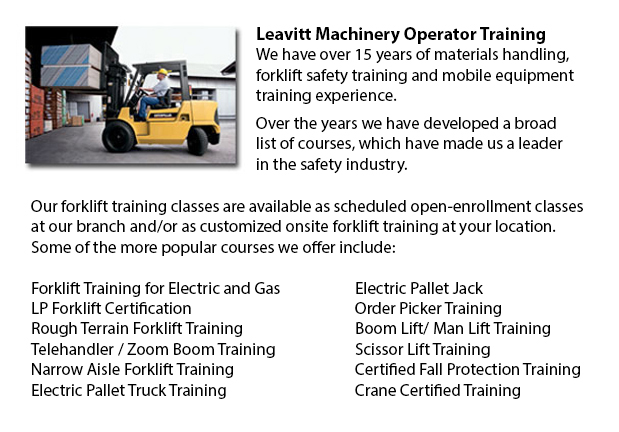
Aerial Lift Training Oakville - Aerial hoists can accommodate numerous duties involving high and hard reaching places. Normally utilized to complete routine repair in buildings with lofty ceilings, prune tree branches, raise burdensome shelving units or fix telephone cables. A ladder could also be utilized for many of the aforementioned projects, although aerial lifts provide more security and strength when correctly used.
There are a handful of different versions of aerial hoists accessible, each being capable of performing moderately different tasks. Painters will sometimes use a scissor lift platform, which can be used to get in touch with the 2nd story of buildings. The scissor aerial jacks use criss-cross braces to stretch out and lengthen upwards. There is a platform attached to the top of the braces that rises simultaneously as the criss-cross braces raise.
Container trucks and cherry pickers are a different kind of aerial hoist. They contain a bucket platform on top of a long arm. As this arm unfolds, the attached platform rises. Forklifts use a pronged arm that rises upwards as the lever is moved. Boom lift trucks have a hydraulic arm that extends outward and hoists the platform. Every one of these aerial platform lifts call for special training to operate.
Training programs offered through Occupational Safety & Health Association, known also as OSHA, cover safety techniques, system operation, upkeep and inspection and machine load capacities. Successful completion of these training courses earns a special certified license. Only properly certified individuals who have OSHA operating licenses should run aerial lifts. The Occupational Safety & Health Organization has established rules to maintain safety and prevent injury when utilizing aerial platform lifts. Common sense rules such as not using this machine to give rides and making sure all tires on aerial hoists are braced in order to hinder machine tipping are noted within the guidelines.
Regrettably, statistics illustrate that more than 20 operators die each year while running aerial hoists and 8% of those are commercial painters. Most of these incidents are due to inappropriate tire bracing and the hoist falling over; therefore some of these deaths had been preventable. Operators should ensure that all wheels are locked and braces as a critical safety precaution to stop the device from toppling over.
Marking the surrounding area with obvious markers have to be utilized to safeguard would-be passers-by so that they do not come near the lift. Furthermore, markings must be placed at about 10 feet of clearance between any power lines and the aerial hoist. Lift operators should at all times be well harnessed to the hoist while up in the air.
-
Pallet Stackers
Pallet Stackers Training Oakville - Pallet stackers are a type of pallet jack that may be utilized to stack, transfer and lift commodities placed on a pallet that are far too tedious for physical lifting. Mainly these mechanisms are used to load and... More -
Rough Terrain Forklifts
Rough Terrain Forklifts Training Oakville - There are actually two unique categories of forklifts within the material handling market, the industrial model and the rough terrain model. Rough terrain forklifts first arrived on the market in the 1940's... More -
Boom Trucks
Boom Trucks Training Oakville - A boom truck is frequently recognized by the cable and phone business vehicles that have the extended arm folded over their roofs. Commonly, a bucket-like apparatus sits at the extension of extendable arms. Normally re... More -
Crown Forklift
More -
Reach Trucks
Reach Truck Training Oakville - Reach Trucks are industrialized equipment utilized for loading and storage in some firms that maintain storage of cargo to finished commodities on a pallet which are then inserted into high shelving units. This loading... More

Forklift Certification Oakville
TOLL FREE: 1-888-254-6157
Oakville, Ontario
forkliftcertificationoakville.com
Email Us
About Us


